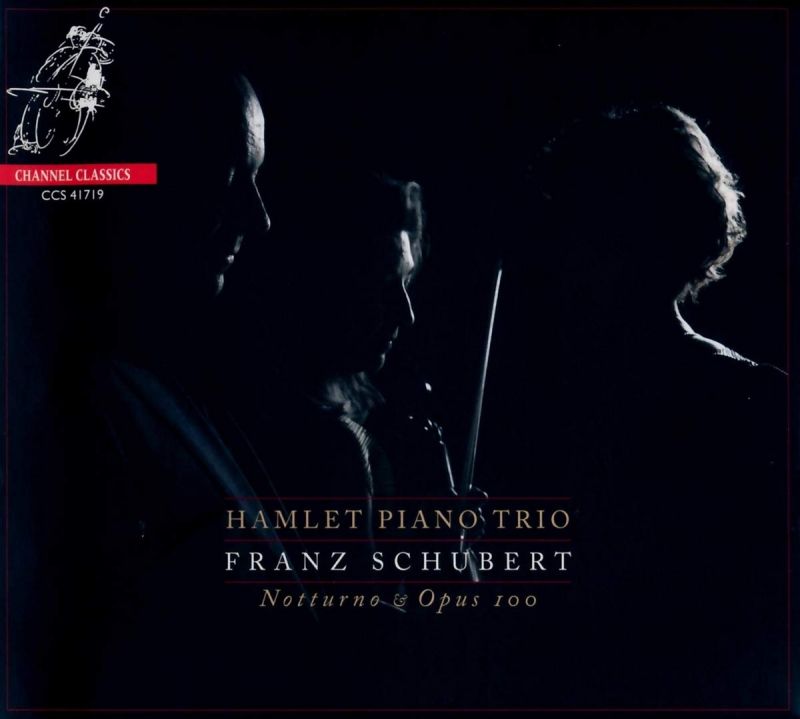SCHUBERT Piano Trio D929 (Hamlet Piano Trio)
View record and artist detailsRecord and Artist Details
Composer or Director: Franz Schubert
Genre:
Chamber
Label: Channel Classics
Magazine Review Date: 01/2020
Media Format: CD or Download
Media Runtime: 58
Mastering:
DDD
Catalogue Number: CCS41719

Tracks:
| Composition | Artist Credit |
|---|---|
| Notturno |
Franz Schubert, Composer
Franz Schubert, Composer Hamlet Piano Trio |
| Piano Trio No. 2 |
Franz Schubert, Composer
Franz Schubert, Composer Hamlet Piano Trio |
Author: David Threasher
The booklet is an oddity, describing the wonderful Notturno, D897, as ‘a great rarity’. Presumbly that’s a rarity along the lines of rats on the London Underground, or Olivia Colman’s television appearances. Moreover, the note also claims that this E flat work was composed as the original second movement of the E flat Trio, D929; most opinion (for example, Martin Chusid in The Cambridge Companion to Schubert) connects it more firmly with the First Trio, the B flat work, D898.
Don’t cast the booklet away, though, as it contains a brief introduction by the recording’s cellist, Xenia Jankovic, explaining the revelation to these players of switching from modern instruments to gut strings and classical bows. You’re aware of the change in balance right from the Notturno’s opening rolled piano chords, gently brushed by Paolo Giacometti on a Conrad Graf from c1826. In the two fortissimo sections and, even more so, from the very outset of the E flat Trio, these instruments complement each other in a way steel strings and a Steinway cannot, the focus shifted away from the piano towards the strings, with the result that the violin (Candida Thompson) and cello don’t have to fight to be heard against the piano.
Another bonus is that the Hamlet Trio play the original, pre-publication version of the finale, complete with exposition repeat and an additional 98 bars in the development, which Schubert evidently felt too much for players or audiences of the time. One important structural point lost in the familiar cut version is a passage in which the theme of the slow movement returns, played simultaneously with the cimbalom-like repeated-note figure – the only time this juxtaposition occurs.
The piano trios aren’t often recorded on period instruments and it’s good to hear, just occasionally, the longer and more garrulous finale of the E flat, especially when played and engineered (Jared Sacks) as finely as it is here.
Discover the world's largest classical music catalogue with Presto Music.

Gramophone Digital Club
- Digital Edition
- Digital Archive
- Reviews Database
- Full website access
From £8.75 / month
Subscribe
Gramophone Full Club
- Print Edition
- Digital Edition
- Digital Archive
- Reviews Database
- Full website access
From £11.00 / month
Subscribe
If you are a library, university or other organisation that would be interested in an institutional subscription to Gramophone please click here for further information.




